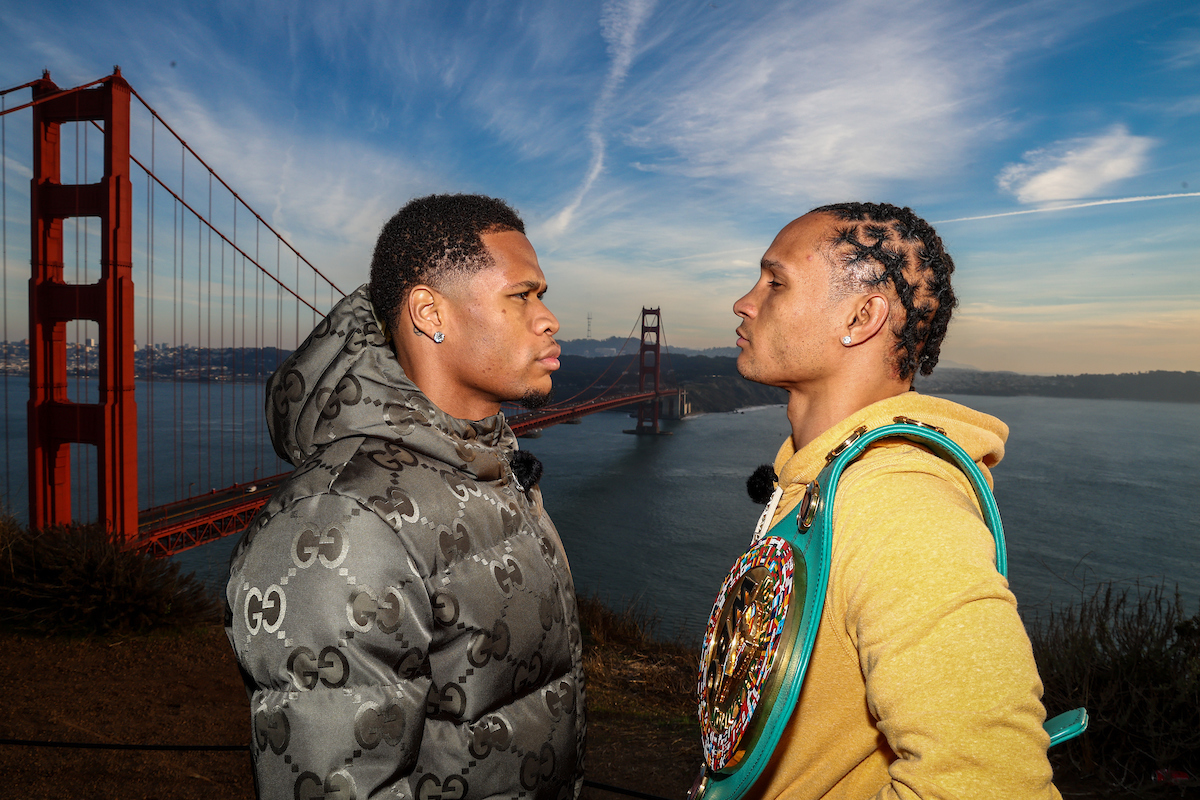Devin Haney and Regis Prograis fight on Saturday.
The Matchroom bout, from the Chase Center in San Fransisco, California, sees Prograis put his WBC junior welterweight title on the line.
Haney, the former undisputed lightweight world champion, will look to become a two-division world champion. Prograis has been one of the fight fans' favorite but has never gotten the crossover appeal until now.
Here are five things to think about before the first bell rings on Saturday.
01. The stats say this is even.
According to CompuBox, Prograis throws more jabs per round. Yet, Haney has a higher jab connect percentage. Thus, Haney’s jab is used as a weapon to slow down his opponent’s output.
The most surprising thing is Haney and Prograis have similar defensive stats. Haney has an edge at 25.1% of power punches landed on him, compared to Prograis at 26.2%. Yet, Prograis gets hit less overall at 19.2%. Devin Haney sits at 19.9%.
The numbers say that both fighters have similar defenses. The numbers also say they both have highly effective jabs.
What the numbers don't say is; who will be more effective with it in this fight.
02. Second straight southpaw.
Devin Haney might have fought the toughest southpaw at lightweight, Vasyl Lomachenko. Now, he is moving up a weight class and facing Regis Prograis — a southpaw puncher. Not many are willing to fight southpaw.
Even more telling is that three of Haney’s big fights have now been against southpaws. Joseph Diaz Jr., Lomachenko, and now Prograis. Haney is not avoiding southpaws in his championship run.
This is reminiscent of Bernard Hopkins from years past when he faced southpaws in consecutive bouts as well. And, on a smaller scale, Badou Jack did it a decade ago with less fanfare.
03. The Champion in B-side.
The promotion, the venue — everything is for Haney. Even Devin Haney’s name is first on the poster. Yet, it is Regis Prograis who is putting his WBC junior welterweight world title on the line.
Haney was born in San Francisco, Ca. Not raised there, but has deep ties to the area. Training in Hayward, and San Carlos, Ca, throughout his life.
Prograis, though, should walk second, as the champion does. It is hard to remember a similar instance in recent memory where a world champion is looked at as an afterthought. Yet, that is what it appears in the build-up.
04. Age
Haney is 25-years-old. Prograis is 34-years-old. That matters. Age is real, and aging is real.
Haney has a style based on his youth and athleticism. Prograis has a style based on force and setting up big shots.
The big question is whether Prograis is slowing down. He is now in his mid-30s. Haney is reaching his athletic prime — will that matter?
Also, on the flip side, Prograis has lived a full life. Haney is seemingly finding who he wants to be. Could maturity and self-belief in old age be a factor?
05. Experience
Prograis has had 30 fights and gone 148 rounds. Haney has fought 30 fights and gone 198 rounds.
Sure, Prograis’ power is a big factor in obtaining rounds, but Haney has had more ring time than Prograis. However, not all rounds are created equal.
As most look at Prograis as the veteran in this fight based on age, but Haney has actually been boxing longer than him. Haney also has more experience in terms of amateur pedigree and professional bouts.
Yet, Prograis has the experience you can't teach. The belief that his fists can do the talking. The belief that any minute he could land a big punch.
Experience will play a role in this fight.

